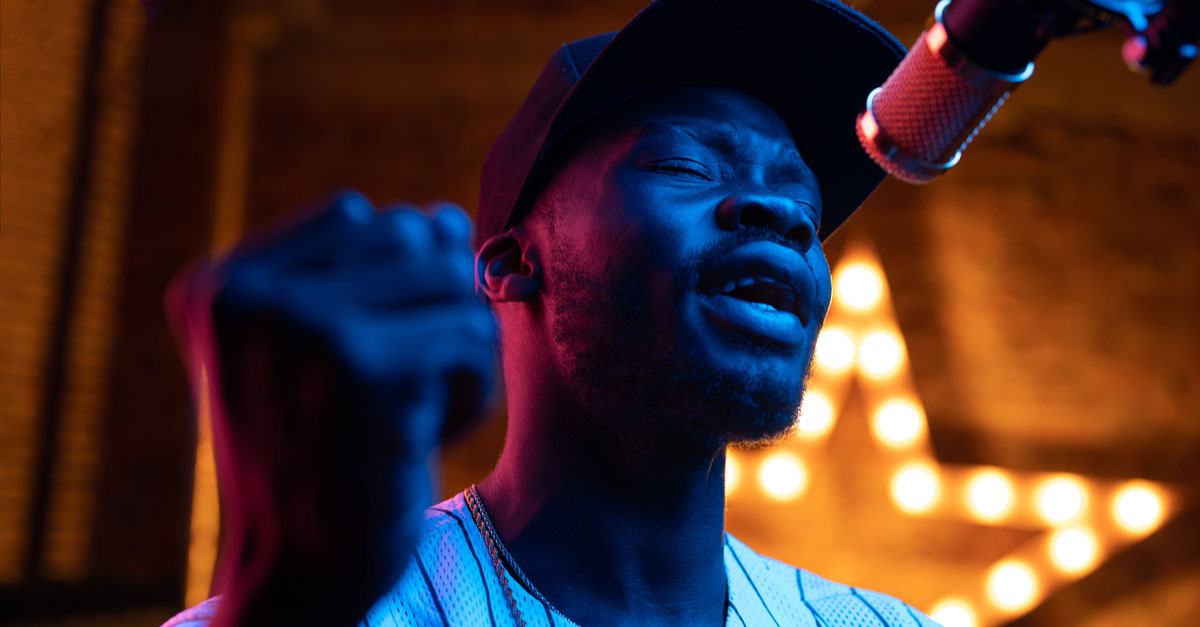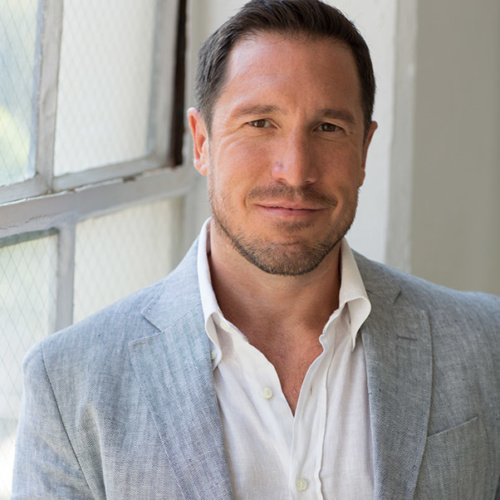Takeaway: genetics set your starting line; disciplined practice determines the finish line.
Music Career Finder
Start Here:
Singing 101: Science‑Backed Tips, Pro Hacks & Hard Truths

- Almost everyone can learn to sing—tone‑deafness is rare.
- Great singing starts with posture, diaphragmatic breathing, and daily warm‑ups.
- Short, focused practice (15‑20 min) beats marathon sessions.
- Protect your voice: hydrate, sleep, avoid shouting & over‑singing.
- Use tech—record yourself, straw phonation, pitch‑training apps.
- Progress is a plateau‑and‑leap journey; love the plateaus!
- Introduction
- Is Singing a Talent or a Trainable Skill?
- Anatomy 101: How Your Voice Actually Works
- The Diaphragm‑Fuel Myth (and the Real Story)
- Semi‑Occluded Vocal Tract Exercises (SOVT)
- What’s the Best Age to Start Singing Lessons?
- Find & Expand Your Vocal Range
- Quick DIY Range Test
- Daily Technique: The Core Three
- 1. Posture
- 2. Breath Support
- 3. Resonance Tuning
- How to Improve Your Singing Voice
- How Long Does It Take to “Sing Well”?
- How Much Should You Practice?
- Genre‑Specific Tricks
- Pop & R&B
- Rock
- Musical Theatre
- Classical
- Tech Tools & DIY Feedback
- The Digital Stage: Social Media & Tech for Singers
- The Hard Truths (& Why They Shouldn’t Scare You)
- Mindset: Keep the Joy
- Next Steps & Resources
- Sources
Ever wondered why some people seem “born singers” while the rest of us croak—and whether science, not magic, can change that?
This guide dives into the anatomy, mindset, and daily habits that turn raw vocal cords into an instrument you can trust—sprinkled with candid wisdom from A‑list vocal coaches and a few hard truths no TikTok tip‑video will mention.
Is Singing a Talent or a Trainable Skill?
Anatomy 101: How Your Voice Actually Works
The Diaphragm‑Fuel Myth (and the Real Story)
Your diaphragm is the engine starter, not the engine. Good singing relies on steady subglottal pressure—think of it as cruise‑control for your vocal folds. Picture inflating a balloon below your ribs; that outward expansion is your cue that the diaphragm has dropped and your lungs are loaded.
Semi‑Occluded Vocal Tract Exercises (SOVT)
Scientist Ingo Titze coined straw phonation to equalize air pressure above and below the cords—like weight‑lifting with joint support. His warning: “You should never push the voice into the extreme in one direction for sustained periods… singers who save the belt for the money notes sustain a healthier career.”
Hey, what do you think about trying our new Music Career HelperMusic Career Helper really quick? It’s totally free and could help get your career moving fast! Give it a try. It’s totally free and you have nothing to lose.
What’s the Best Age to Start Singing Lessons?
If a child can focus, imitate pitch, and wants the work, start. Otherwise, let them belt Encanto in the living room and protect the joy.
Find & Expand Your Vocal Range
Learn to breathe low into your belly instead of shallow chest breathing. Proper breath support keeps your tone steady and prevents strain.
“If you sing through the back of your throat and push a lot of air, you lose resonance and tone. It’s harder to hit notes. Then your voice is probably going to get tired, and you can become hoarse more easily.” — Teri Danz, Vocal Coach
Quick DIY Range Test
- Download a free piano app.
- Start at middle C (C4) and slide down by semitones until your voice fizzles—note that pitch.
- Repeat upward toward your ceiling.
Label the span (e.g., G2–A4). Now you know which songs to transpose and where your “money notes” live.
Daily Technique: The Core Three
1. Posture
Tall spine, ears over shoulders, knees soft. Your rib cage is the acoustic shell—keep it open.
2. Breath Support
Silent inhale through the mouth, belly/ribs expand 360°, gentle abdominal engagement as you sing.
3. Resonance Tuning
Experiment with vowel shapes—UH for height, AE for bright belt. Record & adjust.
How to Improve Your Singing Voice
Layer technique practice:
- Warm‑ups: lip trills, sirens, straw slides.
- Range builders: arpeggios on “gee.”
- Agility drills: five‑note runs on “ya‑ya‑ya.”
- Stylistic play: copy short riff from your favorite singer, then reshape it into your tone.
How Long Does It Take to “Sing Well”?
Think of milestones, not finish lines: 6 months = reliable pitch; 18 months = expanded range; 3‑5 years = stylistic identity.
How Much Should You Practice?
Use the 25/5 method: 25 min focused drills, 5 min rest/stretch. Two rounds = elite‑athlete workload without vocal burnout.
Genre‑Specific Tricks
Pop & R&B
Develop mix voice for radio‑ready belting. Practice runs slowly with a metronome, increasing speed only when pitch stays locked.
Rock
Edge and twang add grit. Keep the larynx flexible—scream practice must incorporate straw cool‑downs.
Musical Theatre
Master chest‑mix transitions (your passaggi) so spoken dialogue flows into sung lines.
Classical
Centralize vowels toward a neutral UH and maintain legato airflow.
Tech Tools & DIY Feedback
- Apps: Toned Ear (ear‑training), Vocal Pitch Monitor (real‑time), VoCo (AI warm‑up generator).
- DAWs: GarageBand or Reaper to multitrack yourself and spot intonation drift.
- Cheap gear: dynamic mic + audio interface = instant progress through playback reality checks.
The Digital Stage: Social Media & Tech for Singers
Once upon a time, “making it” meant singing in smoky clubs and hoping a talent scout wandered in. Now? A 16-year-old with a phone can go viral overnight. Welcome to the digital stage. Platforms like TikTok, YouTube Shorts, and Instagram Reels have become audition rooms for a global audience. Even better? You can reach fans, collaborators, and industry pros without leaving your bedroom. From livestreamed open mics to AI-powered vocal apps, singers today have tools older generations could only dream of. If you’re not using them, you’re missing out.
Let’s start with TikTok. It’s not just lip-syncs and dances—musicians are blowing up daily with 15-second covers or behind-the-scenes clips. Berklee instructors are even teaching strategies for it. Singer-songwriter Em Beihold says, “TikTok helped me go from zero fans to signed artist in a matter of months.” But it’s a hustle. One video isn’t enough. You need consistency, creativity, and a plan to keep eyes (and ears) on you.
If going viral feels overwhelming, livestreaming platforms like Twitch and YouTube Live offer a slower, more personal path. Singers build communities there by performing, chatting, and hanging with fans in real time. It’s not about millions of views—it’s about real connection. One artist said, “Twitch gave me an actual music career. I’m full-time now because of my regulars.” That’s the power of a small but loyal audience. You’re not just broadcasting—you’re building relationships.
Not into performing live just yet? Join a Discord server for singers. Think of it as a giant digital jam room. Some servers have 30,000+ members doing karaoke nights, offering feedback, or just sharing voice notes. Whether you want encouragement or critique, you’ll find it. These online communities are perfect for shy singers or anyone craving peers who actually get the grind.
Now let’s talk tech. Modern tools can turn your phone into a mini vocal coach. Apps like VoCo or SingSharp give instant pitch feedback and suggest custom exercises. Some even gamify practice, showing your vocal progress over time. While no app replaces a real Teacher or Coach, they’re gold for daily drills, late-night ideas, and tracking improvement. And if you’ve ever wanted to hear yourself in full harmony? Multitrack yourself with free DAWs like BandLab and start arranging your own vocal stacks. It’s addictive, in the best way.
Singer-songwriter Laufey shares how posting her music on TikTok helped launch her career—and gives real advice to aspiring singers in this interview.
The Hard Truths (& Why They Shouldn’t Scare You)
- Vocal Injury Is Real: Nodules love dehydrated, over‑sung cords.
- Plateaus Happen: Progress feels flat before a leap—embrace the neuroscience.
- The Internet Is Crowded: Passion ≠ audience. You’ll need hustle and a unique story.
- No One‑Size‑Fits‑All Method: What works for Adele may wreck your voice.
Here’s the upside: your voice is the only one with your DNA, your experiences, your point of view. Master the craft, protect the instrument, and you’ll trade uncertainty for unstoppable curiosity.
Mindset: Keep the Joy
Record the tiny wins, celebrate each new note, and remember that even pros still take lessons.
Next Steps & Resources
Sources

Matt Farnsworth
Matt Farnsworth is an accomplished Voice Teacher and Pianist. He has been teaching voice since 1995 when he became the Consulting Coach on Broadway’s production of Rent. His students have been nominated and won Oscar, Tony and Grammy awards and can be seen performing in Film, Television, on Broadway, National Tours and Regional houses around the country.
Matt most recently worked on the Netflix films Jingle Jangle and The Prom (directed by Ryan Murphy). In addition to these, the Aretha Franklin movie Respect, Amazon’s Transparent Musical Finale as well as Orange is the New Black and comedy Central’s The Other Two. Matt and his three Associate Teachers are truly grateful to be able to serve the arts community and help others achieve their goals.

Kevin Richards
Hi, My name is Kevin Richards and I’m one of the most respected Vocal Teachers on the planet. With past & present students ranging from Broadway singers to Opera stars to music legends like Rod Stewart, I’ve carved out a unique niche among the world’s musicians.
With a career spanning over 30 years, I’ve sang to countless thousands of people while touring the world and worked with artists from all styles and genres.
I’ve learned a lot about being onstage, not only by toiling away on the local club circuit averaging 150 shows per year in the mid/late 1980s, but while touring the Far East and Europe in 1996 as lead singer in my original rock band. That tour that was highlighted by an appearance at an outdoor music festival in Seoul, Korea in front of 13,000 people. I learned what works and what doesn’t work pretty quickly with that many shows, in front of that many people; it ended up being a great classroom and proving ground for me.
With this multi-layered background under my feet, I definitely have something to offer other performers who simply want to be the best thery can be, not only vocally but professionally. I’ve learned by doing, and know the importance of connecting with an audience. If the audience doesn’t enjoy watching you, then what’s the point of them coming to see you perform?
I sum up my vocal teaching style this way; I want to help Singers and musicians of all types deliver the best performances they can by engaging, maintaining and delivering a great show night after night. I’ve learned a lot in my many years in this crazy business, and I’m excited about passing that on to any artist that wants to excel as a performer.
2010 saw the release of my groundbreaking 2 module vocal program geared for the Rock/Pop vocalist “Breaking the Chains”; now sold in over 90 countries. No other singing course out there was made specifically for the modern Rock and Pop Singer in a language that spoke to them directly. I feel I filled a wide gap in voice instruction with my flagship vocal course.
In 2017 I became the Vocal Coach for legendary Rock icon Sir Rod Stewart, helping him maintain his voice to deliver a great show night after night.

Justin Stoney
Justin Stoney is the Founder of New York Vocal Coaching, an internationally-recognized Voice Teacher and Vocal Coach, developer of the NYVC Voice Teacher Training & Certification Program, and author of the book Sing Like Never Before. He has taught over 20,000 voice lessons to Singers of diverse backgrounds, levels, styles, ethnicities, nationalities, and ages. His clients also include Emmy, Grammy, Oscar, and Tony award-winning artists.
Mr. Stoney has been invited as a Keynote Speaker and Presenter both nationally and internationally for conferences and workshops including PAVA (Pan American Vocology Association), Vocology in Practice, and NYSTA (New York Singing Teachers Association) Professional Development Program. He has appeared on numerous media outlets including NBC, CBS, and ABC, and been featured in multiple publications including The New York Times, Esquire, and SELF. He is a member of NATS (National Association of Teachers of Singing), Vocology in Practice, VASTA (Voice and Speech Trainer’s Association), The Voice Foundation, Actors Equity, and SAG-AFTRA. Justin also collaborates with leading Voice Doctors and Laryngologists to help bridge the gap between vocal pedagogy and voice medicine, and participates in cutting edge research on vocal science, pedagogy, and technology.
Mr. Stoney studied classical vocal technique with veterans of the Metropolitan Opera, Musical Theatre vocal technique with veterans of Broadway, and contemporary vocal technique with industry-leading Pop/Rock/R&B instructors. He also holds a BFA in Musical Theatre Performance and a BA in English from the University of Michigan, where he graduated at the top of his class and was elected University Commencement Speaker. Justin is also certified in Yoga with a strong background in anatomy, Alexander Technique, and physical fitness.
Justin is also the creator and host of the popular singing shows Voice Lessons To The World and Quick Singing Tips.
He has featured in articles by Jezebel, SELF, and The New York Times.

Judy Collins
Judy Collins is an award-winning singer-songwriter whose career dates back to the 1960s. Renowned for her unique interpretations of both traditional and contemporary folk classics, as well as her own deeply moving original works, she has earned widespread admiration.
Her iconic version of Joni Mitchell’s “Both Sides Now” from her groundbreaking 1967 album Wildflowers was inducted into the Grammy Hall of Fame. Judy’s hauntingly beautiful and intimate take on Stephen Sondheim’s “Send in the Clowns,” from the Broadway musical A Little Night Music, earned her the “Song of the Year” award at the 1975 Grammy Awards. She has enjoyed numerous top-ten hits and has released several gold- and platinum-selling albums.
More recently, artists like Rufus Wainwright, Shawn Colvin, Dolly Parton, Joan Baez, and Leonard Cohen have paid tribute to her legacy on the album Born to the Breed: A Tribute to Judy Collins.
Judy Collins remains as creatively active as ever, continuing to write, tour worldwide, and support emerging talent. A true Renaissance woman, she also serves as a filmmaker, record label executive, musical mentor, and a sought-after keynote speaker on topics like mental health and suicide prevention. Through her music, she continues to offer hope and healing, touching hearts and lighting the way for others.





